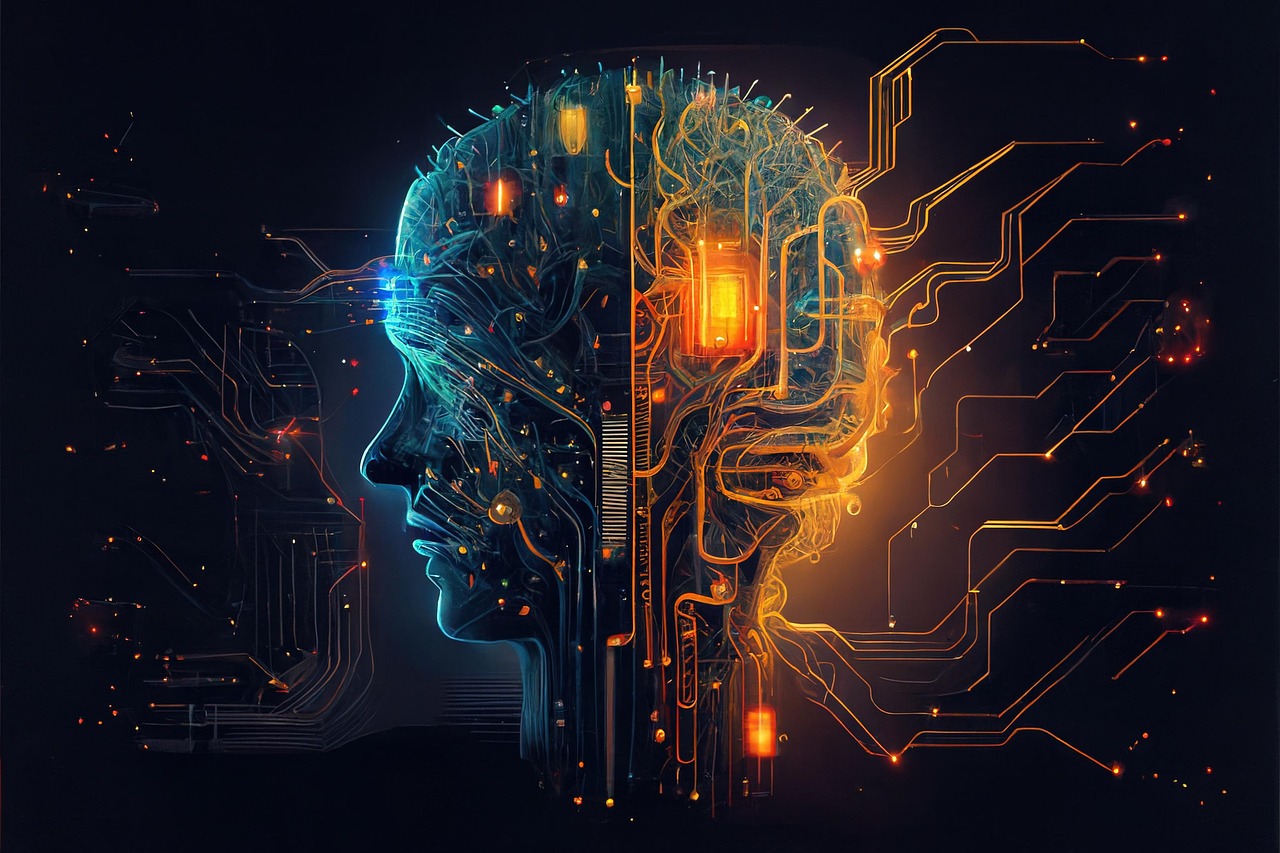Ask any college student to name a favorite professor, and a living, breathing person usually comes to mind. Yet software that grades essays, chats in natural language, and builds instant lesson plans grows more capable each season. Some observers now wonder if robots will stand at the front of lecture halls while human teachers stay home. This large claim—whether Artificial Intelligence can replace college teachers—touches cost, access, and quality. At the start, it helps to note that advanced tools, like careful plagiarism checkers or capstone writing services, already live on campus. They save time and reduce stress, yet they do not wave a magic wand that makes professors disappear. Seeing both sides of the argument can help students, parents, and policymakers choose wisely about the next generation of classrooms. To show why, this article explains what teachers actually do, where machines excel, and where they struggle. By the end, readers will likely expect a handshake between humans and algorithms rather than a winner takes all fight.
Growth of Classroom Technology
Across the past two decades, colleges have turned lecture halls into wired learning spaces. First came slide decks and online grade books. Then learning management systems let students download readings at midnight and submit quizzes from a bus seat. During the pandemic, video platforms pushed change even further, showing that lessons can continue without anyone sharing the same air. Behind many of these shifts sits Artificial Intelligence. Recommendation engines suggest textbook chapters based on past scores. Voice to text tools help disabled learners take notes. Chatbots answer statements like “The final is on this date” at three in the morning so staff can sleep. None of this feels unusual now; new freshmen even expect it. Administrators like tech because it scales well across large enrollments. One piece of code can serve thousands of logins, while a single professor can only grade so many papers before sunrise. With costs rising, schools see digital helpers as an answer to enrollment pressure. The stage seems set for AI to step into larger teaching roles.
What Professors Actually Handle
Before stating that a robot can replace a professor, it helps to list the duties faculty members handle during a typical semester. The obvious duty is delivering lectures, yet that is only the opener. Professors design syllabi that balance skills with curiosity. They pick readings, write assignments, and update material when new discoveries arrive. Office hours allow one on one guidance about thorny concepts and even personal worries. Mentoring also covers letters of recommendation and career advice, tasks that depend on knowing a student’s strengths over time. Assessment forms another large bucket of demanding work. Faculty create fair tests, craft rubrics, and provide feedback that encourages growth rather than shame. Beyond the classroom, professors join committees, run research labs, and apply for funding to support student assistants. Many also guide service learning trips or coach debate teams. Each role draws on judgment, empathy, and local knowledge that grows through long practice. When stacked side by side, the workload shows why simple comparisons to streaming a video lecture miss the heart of teaching.
Strengths of AI in Higher Education
Artificial Intelligence already performs well across several teaching duties. Speed stands out first across routine grading. An algorithm can check thousands of multiple choice questions in seconds, freeing instructors to focus on complex essays. Pattern recognition is another clear strength. By scanning learning management data, AI spots when a student’s quiz scores slip week after week and can send an alert before failure becomes final. Personalization also shines in practice. Adaptive platforms adjust practice problems to match each learner’s pace, turning large lecture sections into something that feels like tutoring. For areas such as foreign language or math drills, immediate feedback keeps momentum alive and steady. Availability matters as well for busy schedules. Chatbots never sleep, so someone stuck on an equation at two in the morning can still get a helpful hint. Finally, AI offers strong cost efficiency. Once built, software runs for pennies per session compared with a human salary. These assets make AI a powerful assistant, suggesting that some pieces of a professor’s work could migrate to silicon without reducing educational quality.
Where Machines Still Struggle
Even with sharp code, AI lacks qualities central to higher learning. The first gap is genuine empathy. Algorithms can mimic caring words, yet they do not truly feel concern when a first generation student thinks about dropping out. That missing spark affects trust, which research shows is essential to persistence across difficult courses. Next comes creativity during dynamic discussions. Software excels at known patterns but struggles to craft brand new theories or respond to a classroom debate that veers into unexpected territory. Context awareness is also limited in real time. A human professor can read frowns across the room and change tactics on the spot; a bot sees only data points. Ethical reasoning presents another hard hurdle. Questions about history, literature, or bioethics often have no single right answer. Grading these responses requires nuanced judgment shaped by culture and lived experience. Finally, mentorship depends on long term relationships that deepen across years. Writing a strong reference letter means recalling stories from lab meetings months earlier, a task that goes beyond databases. These gaps remind observers that teaching is as much heart as hardware, and that nuance matters.
Human Touch in Mentoring and Motivation
Motivation in college often grows through stories, jokes, and small acts of kindness that lines of code cannot reproduce. When a nervous freshman stays after class, a seasoned professor might share a personal tale of failure turned into success. That moment can shape a student’s identity far more than an auto graded quiz. The same holds true for group projects with uneven dynamics. Good teachers mediate disputes, help quieter voices speak up, and model respectful disagreement that keeps teams productive. AI tools can match personalities on paper, yet they do not sense a tension that rises when two lab partners avoid eye contact. Mentoring stretches well beyond the semester into adult life. Alumni often remember the professor who wrote a last minute letter that helped secure a scholarship or job. Such long running relationships build social capital, a key factor in upward mobility for many families. While machines might track networking events, they do not pick up a phone to coach a graduate through a rough first year in industry. Relationship based learning remains ground where flesh beats silicon across countless personal moments.
Ethical and Equity Concerns
Replacing professors with code raises ethical red flags on many fronts. Algorithms learn from data, and that data often carries hidden biases from older systems. If historical records show fewer women passing physics, an AI tutor might wrongly lower its expectations for future female students, reinforcing inequality through careless feedback. Transparent models and constant audits are essential, yet few campuses have resources to run them with rigor. Privacy brings more worries for everyday learners. Adaptive platforms collect clicks, pause times, and even eye tracking metrics tied to study habits. Storing such intimate profiles could expose students to marketing or surveillance if leaks occur or policies change. Employment questions surface as well in academic departments. Tenure track jobs already shrink each year; wide automation could move secure teaching careers toward gig style contracts for on site proctors. Cost savings might please budgets in the short term, but they could widen the gap between rich universities that keep human mentors and cash strapped schools that offer only chat windows. Finally, accountability grows murky when systems fail. When a self paced course fails an entire cohort, who answers the angry parents and explains next steps. Ethical frameworks must expand before AI gains full classroom control across degree programs.
A Future Built on Collaboration
Framing the debate as a zero sum contest misses the most likely outcome: collaboration between people and tools. Many experts picture a blended model in which AI handles repetitive chores while professors focus on high impact tasks that require judgment. Imagine software that grades grammar and flags plagiarism within minutes, allowing instructors to spend workshop time on argument structure and creativity. Virtual labs could let engineering students test designs safely before building physical prototypes under faculty supervision with careful guidance. Meanwhile, predictive analytics can alert advisers when a learner risks burnout, giving professors a chance to step in with timely support and resources. Such a partnership mirrors other fields, like medicine, where diagnostic tools aid but do not replace doctors who counsel patients. The key is intentional design and shared training. Institutions must train faculty to interpret AI outputs, set ethical guardrails, and tune algorithms to fit local cultures and goals. When used wisely, machines boost efficiency and widen access without erasing human warmth that anchors learning. The future classroom may feel different, yet the professor’s role will remain essential, refocused on what humans perform best in complex settings.
Practical Tips for Students and Teachers
College communities do not need to wait for science fiction to practice healthy AI habits. Students can start by treating chatbots as study guides, not answer keys during homework. Asking why a solution works builds understanding, while copy and paste produces weak learning and poor memory. Keeping digital notes about which tools help most also supports reflection and growth. Professors should pilot small AI features before adopting campus wide systems that affect grades. Trying auto captioning in one lecture allows feedback on accuracy and inclusion for diverse learners. Faculty can teach scholars how to question algorithmic results, an important skill for engaged citizens who value evidence. Joint guidelines matter as well for trust. Setting class rules on acceptable tool use prevents confusion and maintains academic honesty with clear expectations. Campus leaders should budget for tech support staff who can troubleshoot glitches before they derail learning and include student voices when picking new tools for courses. Doing so builds trust, keeps decisions from feeling like top down orders, and encourages campus buy in across departments. By approaching AI with curiosity, skepticism, and shared responsibility, colleges can harness its strengths while guarding the values that have long made higher learning a uniquely human endeavor that prizes insight, community, and care.

